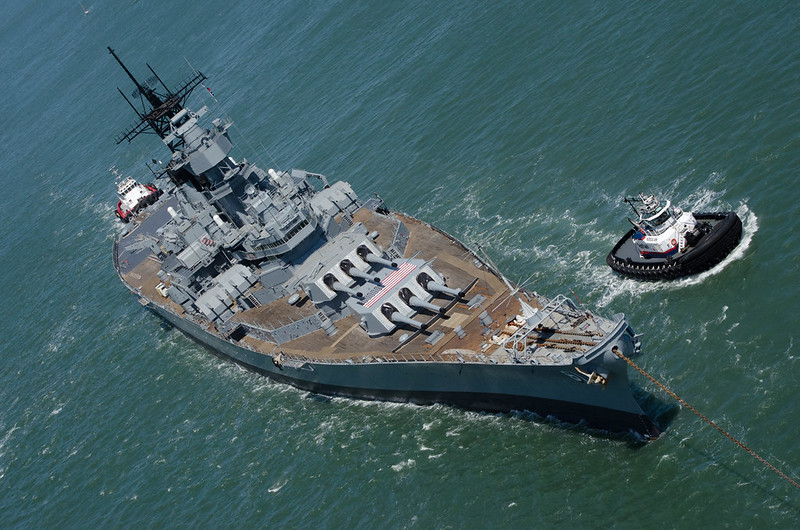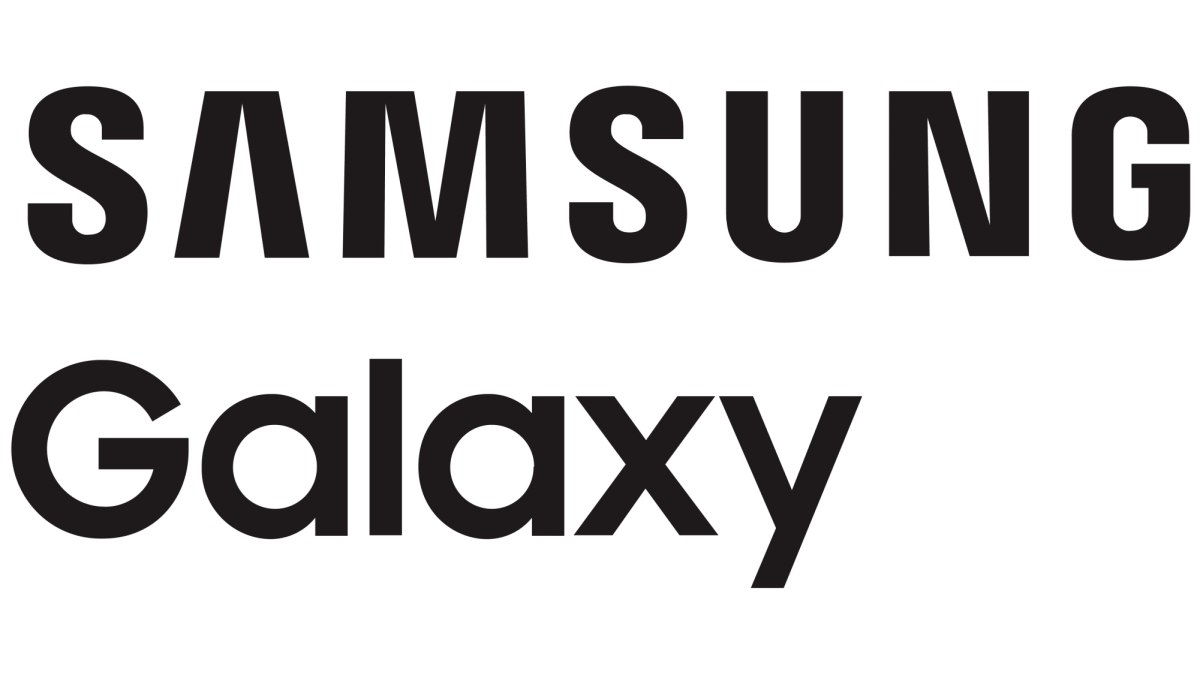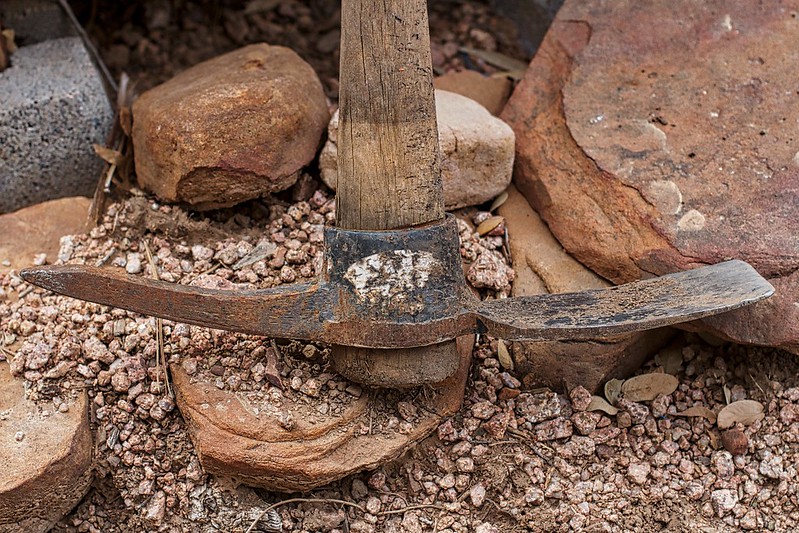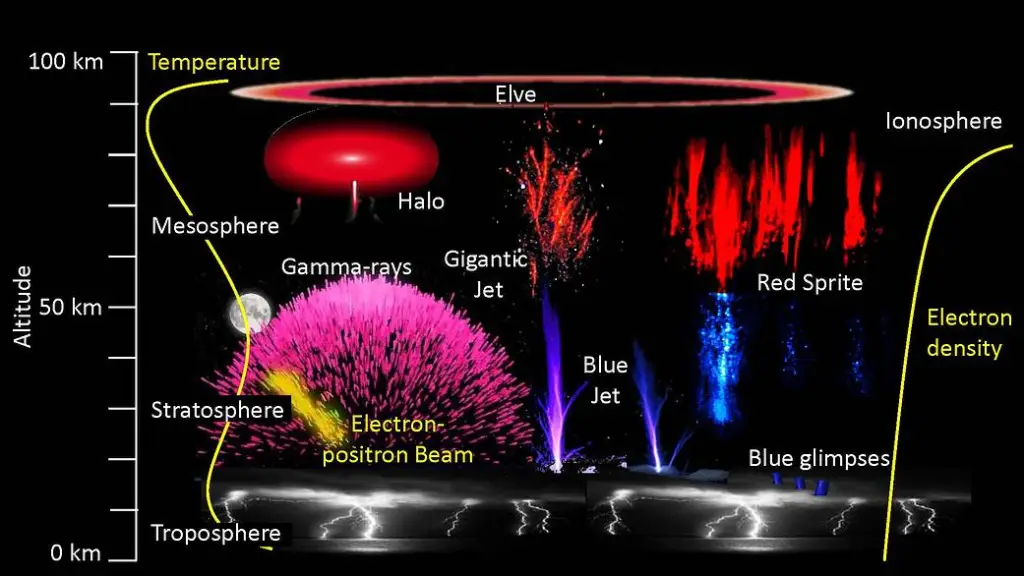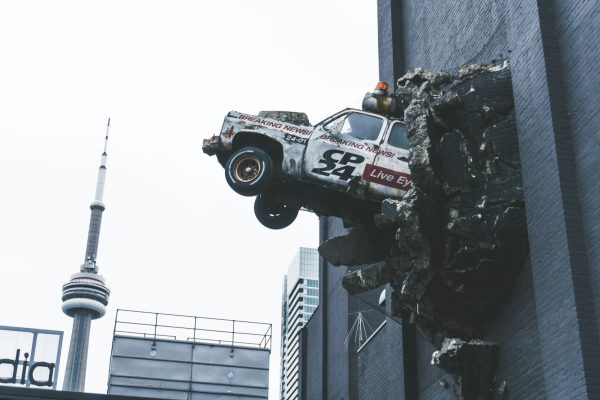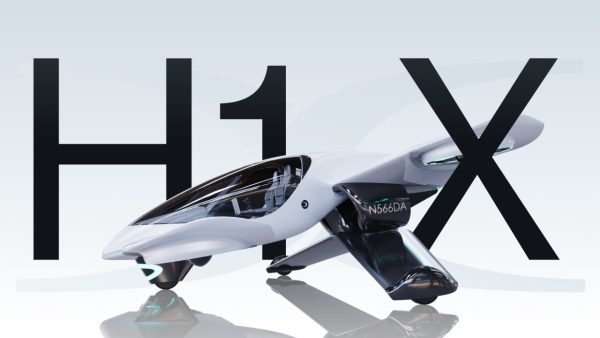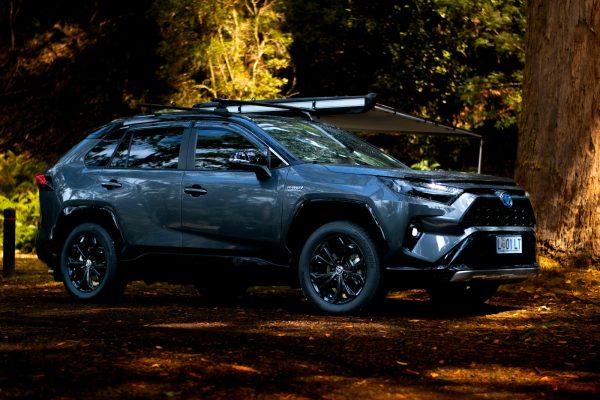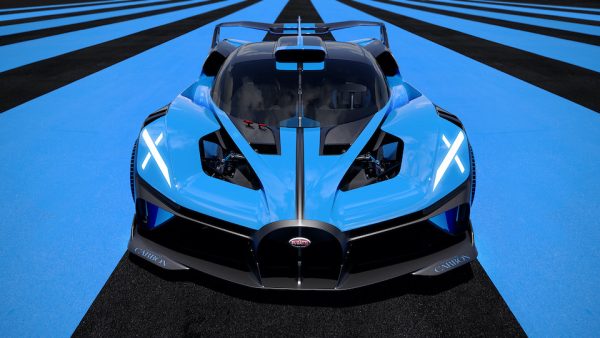USS Iowa-The ship that served for almost half of a century
Source: Dawn Endico
“USS Iowa” by Dawn Endico is licensed under CC BY-SA 2.0
Battleships were a iconic sign of power, they were used as the ultimate sign of ” don’t-mess-with-me” for any country’s navy for the first portion of the 20th century. For each countries does not want to be messed with from someone else. And during the late 1930s, tension were rising as Germany, now under the rule of Adolf Hitler and the Nazi Party, was rearming themselves at an alarming rate. All of the other nations were also preparing themselves just in case. And, as everyone may know, Germany started World War 2 by invading Poland and UK and France declare war on Germany in 1939. During this period many iconic warships were made, like the German Bismarck, the British Hood, the Soviet Sovetsky Soyuz, the French Richelieu, and finally the American with the Iowa.
Comber Record and History-WW2
The USS Iowa’s (code-named BB-61) construction begins in the June of 1940 (which US would join WW2 a year later), at the New York Naval Shipyard and were finished on the 27th of August of 1942. It was originally built to fight against the German battleship, the Tirpitz (which were the second ship of the Bismarck-class battleship), which were spotted swimming around the Norwegian area (the Tirpitz were later sunk by the Royal Navy). But, before she (all ships were considered female) can reach there, she broke down and have to go back to US and be repaired at the Norfolk Navy Yard. After that the Iowa were used to carry former president Franklin D. Roosevelt, Cordell Hull (Secretary of States), Admiral William D. Leachy (Chief of Staff), General George C. Marshall (Army Chief of Staff), Ernest King (Chief of Naval Operations), and others to the Tehran Conference (where Josef Stalin, Winston Churchill, and FDR have their first meeting on fighting against the Axis Power, which is Nazi Germany, Imperial Japan, and Fascist Italy). Before this trip, the Iowa have a new bathtub fitted in her so that FDR (who have Polios and can’t stand up by himself) can clean himself during the trip. The destroyer ship USS William D. Porter accompanied the Iowa during the trip. FDR later called the Iowa a “Happy ship” after they have gotten back to USA. The Iowa saw most of it’s WW2 action with the Battleship Division 7, where she was used the Division’s main flagship. The Division were used for the campaign in the Pacific against Japan, where she was used as an escort ship for aircraft carriers. The Iowa, and it’s sister ship New Jersey, made her first kill, a Japanese light cruiser called the Katori, on February 21, 1944. Later, on March 18, 1944, Iowa got her first hit. But she sustained little damage from the two 4.7 inches (120 mm) Japanese shells that hit the her. The Iowa, for the most part, provide artillery barrage for the GI during USA’s “island-hopping” campaign (where USA retake small islands from the Japanese to be used as airfield). And that pretty much summoned up the Iowa’s service in WW2 after Japan surrendered onboard Iowa’s other sister ship, the Missouri.
Stats
The Iowa was one of the more advanced battleships for her time, sporting 16 inches guns while other battleships’ guns were neither 12 inches or 15 inches. And since the Iowa-class battleship (there were 4 of them, which is the (not necessarily in that order) Iowa, Missouri, New Jersey, and Wisconsin) were introduced later than other ships, they have more advanced equipment than their foreign counterparts. Notes, the following stats is is only about the Iowa.
Length: 270.43 meters (887 feet and 3 inches)
Width: 32.97 meters (108 feet and 2 inches)
Height: about 2.82 meters (9.26 feet)
Draft (how deep it’s going to be in water order to float): (when fully loaded) 11.33 meters (37 feet and 2 inches)
Weight: (when fully loaded) 58,400 ton
Crews: (during WW2) 2,637 enlisted crew members and 151 officers
General Armor thickness: about 19 inches
Armaments: (during WW2) nine 16 inches (406 mm) 50 caliber Mark 7 guns
twenty 5 inches (127 mm) 38 caliber Mark 12 guns
seventy-six 40 mm 56 caliber AA (Anti-Aircraft) guns
fifty-two 20mm 70 caliber AA cannons
(from 1984 and beyond)
thirty-two BGM-109 “Tomahawk” cruise missiles
sixteen RGM-84 “Harpoon” cruise missiles
four 20mm 76 caliber Phalanx CIWS
Aircrafts carried: a variety of helicopters, UAV (Unmanned Aerial Vehicles), and floatplanes throughout her service
Engines: 8 Babcock & Wilcox Type-M 600 PSI dual furnace superheat boilers generating about 212,000 horsepower
Combat Record-Korean Wars to present
After WW2 have ended, there is a lot of disarming going on with each countries. But ships were another matter, USA keeps it’s four Iowa-class battleships. And the Iowa, during this time period, were used for training purposes before going to Japan once more to serve (once again) as a flagship. Only this time she served with the 5th Fleet in 1946. But a few months later she returned back to USA and continued her work as a training ship on 25th of March, 1946. Later, in October, the US Navy decided to upgrade the Iowa, and they added a SK-2 radar while replacing some of her 40mm and 20mm anti-aircraft cannons. In July of the following year, (right after the US did a atomic bomb test on Bikini Atoll) Iowa (and a destroyer and a heavy cruiser) were selected for a live fire exercise around Pearl Harbor. Their target is an old battleship called the Nevada. Despite of the hits she got, Nevada did not sink. But a torpedo launched from a Navy aircraft finished her off (she sunk about 65 miles/105 km away from Pearl Harbor). After that, on the 24th of March of 1949, the US Navy pulled out Iowa from front-line service and decommissioned her to the United States Navy Reserve Fleet. This is the Iowa’s first retirement.
About a year later, in 1950, the Korean War started. Which is between the Communist North Korea and the Capitalists South Korea. Since South Korea have western-styled political system, the United Nation (UN) went forward and and support South Korea against North Korea and it’s Chinese and soviets allies. American soldier makes up most of the UN soldier sent over there. President Harry S. Truman also sent out a massive forces of airplanes, tanks, and a massive Navy forces to fight North Korea. Because by then ships begins to play as a mobile artillery platform off to the sea, the Iowa (and her sister ships) were pulled out of retirement. For their nine 16 inches guns were perfect for shelling enemy positions, and they were much cheaper than using missiles. And very quickly, Iowa claimed the destruction of 6 heavy gun positions, the lives of about 100 soldiers, and a division-sized HQ on her first try. And later, she destroyed 4 railroad tunnels. And during these times, the Iowa were awarded with the United Nation Service Medal and the Korean Service Medal (along with a Bronze Star) before the war ended.
After the Korean War (between 1953 and 1958), the Iowa were used in many different NATO exercises before, on September 28th, she returned to Norfolk Shipyard and went to the Philadelphia Naval Shipyard on 22nd of October and later on February 24, 1958, she was (for the second time) decommissioned from front-line service and went to the Atlantic Reserve Fleet.
For the next about 20 years, the Iowa (and her sister ships) remain in the Reserve fleet. Until the Vietnam War-era. When Ronald Regan becomes president in 1981, he (and the Secretary of Navy John F. Lehman) wanted the US Navy to be 600-ships strong (another way of saying that they wanted the US Navy to have 600 ships in their disposal). So, in 1982, the Iowa was then pulled out of retirement (again) and went to Avondale Shipyard (located in New Orleans, Louisiana) for a major upgrade and modernization. During this, the Iowa lost all of her 20mm and 40mm AA guns because they are now too slow to use against the super fast jet fighters and armored helicopters of today. Then, she went to Ingalls Shipbuilding (located in Pascagoula, Mississippi) and then were fitted with as many of the most advanced weaponry possible, which include (like I mentioned before in the Stats section) 16 “Harpoon” cruise missiles and 32 “Tomahawk” cruise missile. The main reason the US Navy can fit these missiles is because of the Iowa’s large-size citadel (the area where a battleship’s engine and ammunitions goes) that can pretty much fit anything in there without much work. The US Navy have also fitted four Phalanx Close-in weapon system Gatling guns for shooting down enemy aircrafts. Not to mention the many different electronics, like radars, fire-control system, and electronics used for electronic warfare. Finally, in 1984, she was ready for service once again.
Although the Iowa herself did not served in the Vietnam War (New Jersey did), she did participated in many NATO naval exercises. During this time, she have been on a world tour. She have traveled to Le Havre, France (which is a major ocean port located in the northern part of France), Kiel, Germany (which is also a port but located in Germany), Copenhagen and Aarhus, Denmark (where the current Crown Prince of Denmark have visited when he is young), and finally Oslo, the capital of Norway, Norway, where the King of Norway have been for a lunch. After that, she returned back to the US.
Later, starting on the 17th of March, 1986, the Iowa were tested for quality and durability. But, being a ship almost 50 years old by then, she did not manage to pass the that test. Rear Admiral John D. Bulkeley, who is in charge of Iowa’s tests, wanted her to be decommissioned. But the Chief of Naval Operations does not want the Iowa to retire so soon. And so, the Iowa managed to stay on with the front line. After that, the Iowa did not much action.
But she did participated in many different NATO exercises and mock missions. Later, in December of 1986, she received a special UAV called the RQ-2 Pioneer for spotting distant targets for shooting. This increases her accuracy, even though she have been using the same sights and aiming equipment since WW2, because of how accurate the sights are.
Some times later, when the Iran-Iraq War started, Iowa were used as a escort for the Friendly forces providing supplies, weapons, and ammos to the NATO forces to avoid the enemy forces raiding the supplies.
Throughout all of this, Iowa came out pretty much unharmed and her crew have all survived. But she will receive her biggest hit in 1989.
In April 19, 1989, Iowa were practicing in a shooting exercise, when the Number 2 turret suddenly blew up right in front of everyone’ eyes, killing all of her number 2 turret crew members, which is 47. The NICS, or the Naval Criminal Investigative Service (back then know as the Naval Investigative Service or NIS), quickly goes into action. And soon, they have their theory. They believe that one of the dead sailor, named Clayton Hartwig, decided to commit suicide, after an argument with a fellow sailor, and detonated a pack of explosives that he have put on himself when he are inside of the turret. This is later confirmed when the other sailor have find Clayton have somewhat gone insane after that argument. But other people does not believe what the NICS have come up with. With pressure coming from the peoples who have heard about it, Congress then told the Navy to open up the case again for a better investigation. This one, getting investigated by private detectives, were pretty hard because Iowa have been cleaned up and everything within the number 2 turret have thrown out. But, eventually, the detectives have found evidence that showed that the whole accident was accidental and not on purpose. More evidences have turned up, reveling that the Iowa were in poor conditions despite all of the upgrade she got. After that, Admiral Frank Kelso, who was the one who handled the first investigation, were relieved from his job to a lower position after he publicly said sorry to Clayton Hartwig’s family.
With the USSR collapsed and the Communist thread gone, US decided to downsize some of their military power. And the Iowa were some of the first ships to be decommissioned (for the last time) for this, mainly because of her damaged number turret. After her number 2 turret were repaired and she was checked for deflects, she was towed to the Naval Inactive Ship Maintenance Facility and then, finally, she was permanently docked to a port by a street called 250 S Harbor Blvd located in Los Angeles.
Aftermath
USS Iowa, after getting retired for the last time, was now reconfigured into a “Living Museum”, meaning that she can still fill up her fuel tank and go for a cruise and were filled with different kind of artifacts to show what’s the daily life as a sailor onboard her. She may be now retired in real life, but she continued to sail into action in games and other media. You can access her in games such as War Thunder and World of Warships. And also see her in popular anime series such as Azur Lane and High School Fleet. and also see her sister ship, USS Missouri, on the big screen in the movie Battleship (2012), welcoming the invading aliens with her nine 16-inches guns.
Related Stories
https://www.history.navy.mil/our-collections/photography/us-navy-ships/battleships/iowa-bb-61.html
https://ww2db.com/ship_spec.php?ship_id=2
Here is the link to the video showing USS Missouri fighting the invading aliens.
